-
 Bitcoin
Bitcoin $108,703.4836
0.45% -
 Ethereum
Ethereum $2,576.6839
1.58% -
 Tether USDt
Tether USDt $1.0001
0.00% -
 XRP
XRP $2.2924
-0.87% -
 BNB
BNB $660.2136
0.01% -
 Solana
Solana $151.4729
-0.29% -
 USDC
USDC $1.0000
0.00% -
 TRON
TRON $0.2866
0.04% -
 Dogecoin
Dogecoin $0.1698
0.82% -
 Cardano
Cardano $0.5831
0.13% -
 Hyperliquid
Hyperliquid $37.9814
-3.97% -
 Bitcoin Cash
Bitcoin Cash $503.9489
1.93% -
 Sui
Sui $2.8994
0.74% -
 Chainlink
Chainlink $13.5429
0.38% -
 UNUS SED LEO
UNUS SED LEO $9.0693
-0.19% -
 Stellar
Stellar $0.2524
0.15% -
 Avalanche
Avalanche $18.1959
1.02% -
 Shiba Inu
Shiba Inu $0.0...01180
1.48% -
 Toncoin
Toncoin $2.7601
-0.76% -
 Hedera
Hedera $0.1606
0.96% -
 Litecoin
Litecoin $86.6105
0.26% -
 Monero
Monero $315.7691
-0.56% -
 Polkadot
Polkadot $3.3911
0.25% -
 Dai
Dai $1.0001
0.03% -
 Ethena USDe
Ethena USDe $1.0002
0.02% -
 Bitget Token
Bitget Token $4.3076
-0.05% -
 Uniswap
Uniswap $7.5901
3.66% -
 Aave
Aave $288.0954
0.35% -
 Pepe
Pepe $0.0...01002
1.64% -
 Pi
Pi $0.4578
0.09%
How do I view transaction details in Trust Wallet?
Trust Wallet offers a user-friendly way to view transaction details, allowing you to monitor your crypto transactions effectively and manage your digital assets with confidence.
Apr 21, 2025 at 04:42 pm
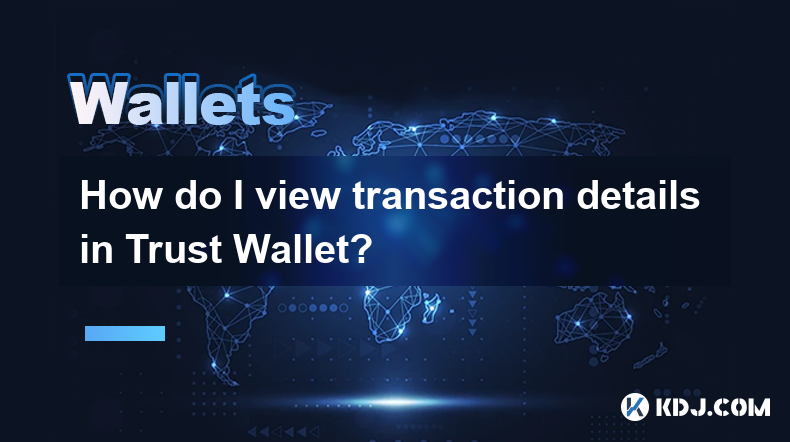
Viewing transaction details in Trust Wallet is a straightforward process that allows users to monitor their cryptocurrency transactions effectively. Whether you are checking the status of a recent transaction or reviewing historical data, Trust Wallet provides a user-friendly interface to access all the necessary information. In this article, we will guide you through the steps to view transaction details in Trust Wallet, ensuring you can manage your digital assets with confidence.
Accessing the Transaction History
To begin viewing your transaction details, you first need to access your transaction history within Trust Wallet. Here's how you can do it:
- Open the Trust Wallet app on your mobile device.
- Tap on the wallet icon located at the bottom of the screen. This will take you to the list of cryptocurrencies you have added to your wallet.
- Select the specific cryptocurrency for which you want to view transaction details. For example, if you want to check Bitcoin transactions, tap on the Bitcoin icon.
- Scroll down to the "Transactions" section. This section will display a list of all the transactions associated with the selected cryptocurrency.
Viewing Individual Transaction Details
Once you have accessed the transaction history, you can view the details of any individual transaction. Follow these steps:
- Locate the transaction you want to view in the list of transactions.
- Tap on the transaction to open its details. This will display a new screen with comprehensive information about the transaction.
Understanding Transaction Details
When you open the details of a transaction, you will see several key pieces of information. Here's what each part means:
- Transaction Hash: This is a unique identifier for the transaction on the blockchain. It can be used to track the transaction on a blockchain explorer.
- Date and Time: This shows when the transaction occurred.
- Amount: This indicates the amount of cryptocurrency sent or received.
- From/To Address: These are the addresses involved in the transaction. The "From" address is the sender, and the "To" address is the recipient.
- Status: This shows whether the transaction is pending, confirmed, or failed.
- Transaction Fee: This is the fee paid to the network for processing the transaction.
Using a Blockchain Explorer for More Details
For even more detailed information about a transaction, you can use a blockchain explorer. Trust Wallet makes it easy to access a blockchain explorer directly from the transaction details. Here's how:
- Open the transaction details as described above.
- Tap on the "View on Block Explorer" button. This will open the transaction on a blockchain explorer website in your device's default web browser.
- Explore the transaction details on the blockchain explorer. You can see additional information such as the block number, confirmations, and more detailed transaction paths.
Troubleshooting Common Issues
Sometimes, you might encounter issues when trying to view transaction details. Here are some common problems and their solutions:
- Transaction Not Showing Up: If a transaction does not appear in your history, ensure that you have selected the correct cryptocurrency and that the transaction has been broadcast to the network. It may take some time for the transaction to be confirmed and appear in your history.
- Incomplete Transaction Details: If some details are missing, try refreshing the transaction list or restarting the app. If the issue persists, check the transaction on a blockchain explorer.
- Transaction Status Issues: If a transaction shows as pending for an extended period, it might be stuck due to network congestion or insufficient fees. You can try increasing the transaction fee or waiting for the network to clear the backlog.
Exporting Transaction History
Trust Wallet also allows you to export your transaction history for record-keeping or tax purposes. Here's how to do it:
- Go to the transaction history of the cryptocurrency you want to export.
- Tap on the three dots in the top right corner of the screen.
- Select "Export Transactions". This will generate a CSV file containing all your transaction data.
- Choose where to save the file on your device or share it via email or other apps.
Frequently Asked Questions
Q: Can I view transaction details for all cryptocurrencies in Trust Wallet?
A: Yes, Trust Wallet supports viewing transaction details for all cryptocurrencies that it supports. Simply select the specific cryptocurrency from your wallet list to view its transaction history.
Q: How long does it take for a transaction to appear in my history?
A: The time it takes for a transaction to appear in your history can vary depending on the cryptocurrency and network conditions. Generally, it can take anywhere from a few minutes to several hours for a transaction to be confirmed and appear in your history.
Q: What should I do if a transaction is stuck?
A: If a transaction is stuck, you can try increasing the transaction fee to expedite processing. Alternatively, you can wait for the network to clear the backlog. If the transaction remains stuck for an extended period, you may need to contact the support team of the specific cryptocurrency for further assistance.
Q: Is it safe to share my transaction hash with others?
A: Yes, it is generally safe to share your transaction hash as it is a public identifier on the blockchain. However, be cautious about sharing other personal information that could be linked to the transaction.
Disclaimer:info@kdj.com
The information provided is not trading advice. kdj.com does not assume any responsibility for any investments made based on the information provided in this article. Cryptocurrencies are highly volatile and it is highly recommended that you invest with caution after thorough research!
If you believe that the content used on this website infringes your copyright, please contact us immediately (info@kdj.com) and we will delete it promptly.
- Onyxcoin (XCN) vs. Solana (SOL): A Promising Bet in the Crypto Game?
- 2025-07-09 00:30:12
- CoreWeave's Bold Bet: How AI is Reshaping Bitcoin Mining
- 2025-07-09 00:30:12
- Coinbase (COIN) IPO Flashback: Is the Rally Overextended or Just Getting Started?
- 2025-07-08 22:50:12
- Bitcoin Price, Elon Musk, and BTCBULL: A Bullish Trifecta?
- 2025-07-09 00:10:12
- Toonie Trouble: Spotting Fakes Like an Expert
- 2025-07-08 22:50:12
- Coinbase, Crypto Stocks, and Ozak AI: Riding the Web3 Wave in Style
- 2025-07-08 23:10:14
Related knowledge
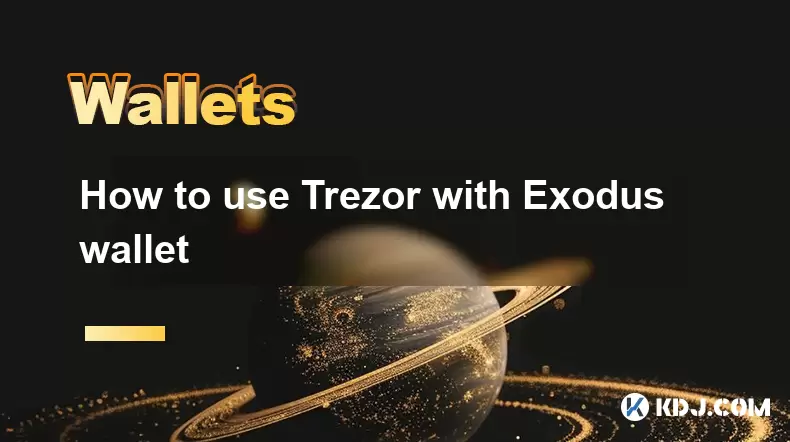
How to use Trezor with Exodus wallet
Jul 09,2025 at 12:49am
Connecting Trezor Hardware Wallet to Exodus Software WalletTo use Trezor with Exodus wallet, users need to connect the hardware wallet to the software...
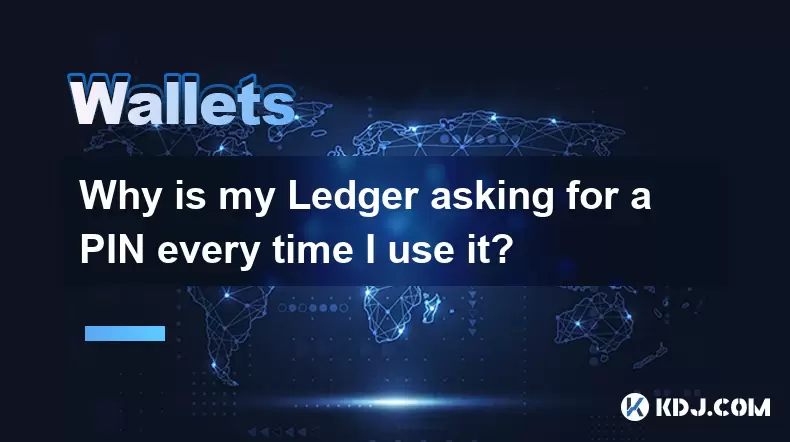
Why is my Ledger asking for a PIN every time I use it?
Jul 08,2025 at 11:21pm
Understanding the Purpose of the PIN on Your Ledger DeviceThe PIN (Personal Identification Number) is a crucial security feature built into every Ledg...
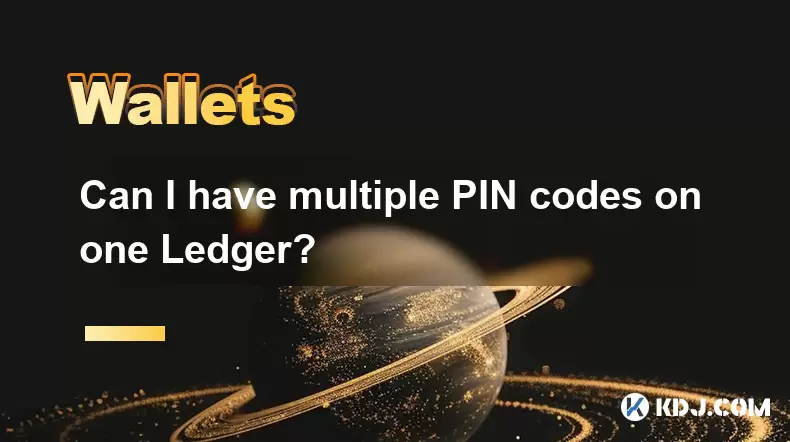
Can I have multiple PIN codes on one Ledger?
Jul 09,2025 at 12:35am
Understanding the Basics of Decentralized Exchanges (DEXs)A decentralized exchange, or DEX, is a type of cryptocurrency trading platform that operates...
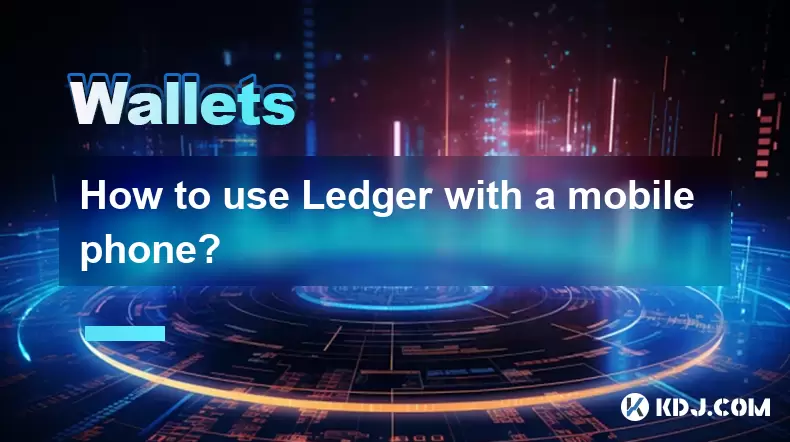
How to use Ledger with a mobile phone?
Jul 08,2025 at 10:49pm
Connecting Ledger Hardware Wallet to Mobile DevicesUsing a Ledger hardware wallet with a mobile phone provides a secure and convenient way to manage c...

How to avoid MetaMask phishing scams?
Jul 08,2025 at 11:35pm
<h3>Understanding MetaMask Phishing Scams</h3><p>MetaMask phishing scams are deceptive tactics used by cybercriminals to trick users...

How to recover my MetaMask wallet with a secret recovery phrase?
Jul 08,2025 at 10:01pm
<h3>Understanding the MetaMask Secret Recovery Phrase</h3><p>When using MetaMask, a widely adopted Ethereum-based wallet, users are ...

How to use Trezor with Exodus wallet
Jul 09,2025 at 12:49am
Connecting Trezor Hardware Wallet to Exodus Software WalletTo use Trezor with Exodus wallet, users need to connect the hardware wallet to the software...

Why is my Ledger asking for a PIN every time I use it?
Jul 08,2025 at 11:21pm
Understanding the Purpose of the PIN on Your Ledger DeviceThe PIN (Personal Identification Number) is a crucial security feature built into every Ledg...

Can I have multiple PIN codes on one Ledger?
Jul 09,2025 at 12:35am
Understanding the Basics of Decentralized Exchanges (DEXs)A decentralized exchange, or DEX, is a type of cryptocurrency trading platform that operates...

How to use Ledger with a mobile phone?
Jul 08,2025 at 10:49pm
Connecting Ledger Hardware Wallet to Mobile DevicesUsing a Ledger hardware wallet with a mobile phone provides a secure and convenient way to manage c...

How to avoid MetaMask phishing scams?
Jul 08,2025 at 11:35pm
<h3>Understanding MetaMask Phishing Scams</h3><p>MetaMask phishing scams are deceptive tactics used by cybercriminals to trick users...

How to recover my MetaMask wallet with a secret recovery phrase?
Jul 08,2025 at 10:01pm
<h3>Understanding the MetaMask Secret Recovery Phrase</h3><p>When using MetaMask, a widely adopted Ethereum-based wallet, users are ...
See all articles

























































































